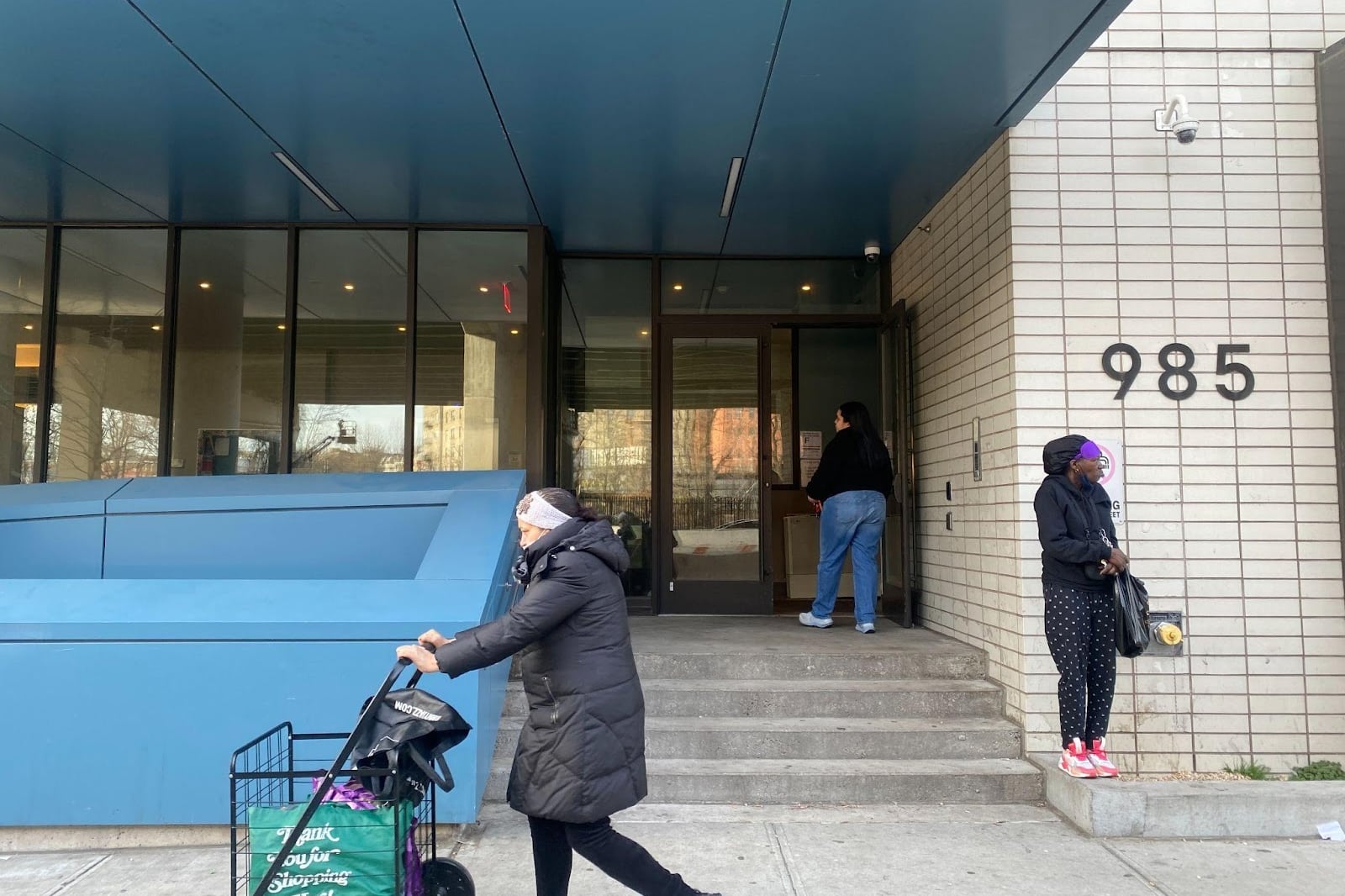Public health, explained: Sign up to receive Healthbeat’s free New York City newsletter here.
Mayor Eric Adams announced some progress this month in addressing homelessness, with the city moving more than 3,500 New Yorkers from “streets and subways” into permanent housing.
The people had previously been living in shelters, not directly on the streets, said Neha Sharma, a spokesperson at the city’s Department of Social Services.
More than 105,000 people slept in city shelters each night in June, and the number of New Yorkers sleeping outside increased to 4,500 this year, according to the city’s annual street count. Some advocates say that in order to address the scope of the problem, city officials should wholly reconsider their approach.
In a few modest buildings in Brooklyn and the Bronx, a pilot program may offer a way forward.
The “Street to Home Housing Pilot,” launched in 2023 by Volunteers of America-Greater New York, is the city’s only program that’s based on the “housing first” philosophy. The 30-year-old strategy developed – but never broadly implemented – in New York City prioritizes moving people directly from the street into permanent housing, without requiring sobriety, treatment, or shelter stays beforehand.
The thinking goes that once a person has a place to live, they are better situated to try to improve other aspects of their lives, like getting sober, or finding a job.
“Housing first was born in New York City in the 1980s, and it’s since been disseminated around the world as an evidence-based practice,” said Philip Yanos, a psychology professor at John Jay College of Criminal Justice who studies homelessness.
Traditional programs do not consider a person ready for housing until they have addressed other issues.
Studies indicate that the housing first approach is highly effective at decreasing homelessness long-term. A 2021 review of 26 studies from the United States and Canada conducted by researchers at the Department of Health and Human Services found that housing first programs decreased homelessness by 88% when compared with treatment first programs.
“There’s like this 40% superiority gap for housing first over continuum of care in terms of being housed within 12 months. So we’re talking about 70% housed in housing first, 30% in continuum of care,” Yanos said, comparing the housing first strategy to New York’s system of moving people first through shelters and then into permanent housing.
In New York City’s pilot housing first program, more than 80% of the 81 participants enrolled at its founding in 2022 remained housed after two years, according to VOA-Greater New York.
“To be able to say to our clients, ‘you can lock your door, you’re gonna have privacy, and any support you need, we’re gonna connect you in real time, but you can come home first’ ... it’s been a game changer,” said Catherine Trapani, VOA-Greater New York’s assistant vice president of public policy.
Adams, who is running for re-election, piloted the program but has not expanded it. His office did not provide a statement in response to multiple requests for comment for this article.
The Trump administration opposes the housing first philosophy. In a July executive order, the administration called for “to the extent permitted by law, ending support for housing first.” The executive order argues that the policy of housing first deprioritizes accountability and fails “to promote treatment, recovery, and self-sufficiency.”
Houston held up as successful housing first model
Advocates for housing first hold up Houston as a successful implementation of the strategy. The Texas city has moved about 25,000 homeless people directly into apartments and houses over the past decade, cutting the number of homeless people in the city by 63% since 2011, the New York Times reported.
Houston’s approach centers on bringing together more than 100 social service organizations, which historically competed against each other, under the leadership of a single umbrella organization run by the Houston Coalition for the Homeless.
At the program’s founding, Mayor Sylvester Turner made the housing first strategy a major focus of his administration. Houston addressed the nonprofit coordination problem with a system of incentives and requirements. The city gave the lead organization the ability to dispense or withhold federal funding from homeless services organizations throughout the city based on their cooperation.
Adams prioritizes rapid street clearances
Adams has argued that his focus on getting homeless people off the street immediately by building shelter beds, conducting encampment sweeps, and pushing for involuntary psychiatric holds restores dignity to homeless New Yorkers by refusing to let them live in dangerous conditions on the streets.
He has contended that allowing severely mentally ill people to remain in encampments while waiting for housing solutions is inhumane and that immediate intervention saves lives.
Critics say his strategy has proven ineffective.
“Mayor Adams has utterly failed to tackle the root causes of homelessness,” said city comptroller Brad Lander, who unsuccessfully ran for mayor in the Democratic primary in June. “According to a [2023] report from my comptroller’s office, out of 2,308 people forcibly removed by the mayor’s ‘sweeps,’ only three were placed into permanent housing. That’s not a solution; that’s a revolving door."
Gresham Worth, a communications manager at Coalition for the Homeless, wrote in a January blog post that the increasing police and National Guard presence in the subway system over recent years has been counterproductive, making it more difficult for outreach workers to establish trust and effectively engage with unsheltered people.
Services can be difficult to navigate
It is difficult and expensive to place homeless people in permanent subsidized units in New York City, where the vacancy rate is just 1.4%. Additionally, the city’s system of supportive housing – affordable housing with onsite services – built up over decades, is mired in red tape.
“We have 18 programs run by nine different agencies with 46 distinct eligibility criteria,” Fred Shack, CEO of Urban Pathways, who has worked with homeless New Yorkers for three decades, said at an April panel discussion.
The supportive housing system in New York can be difficult to navigate for homeless people and their advocates, said Pascale Leone, executive director of the Supportive Housing Network of New York. It takes several months to a year after completing a housing application to hear back from the city about eligibility. Once approved, applicants have one year to find matching programs with available units. All the while, applicants cycle between streets and shelters.
The solution, homeless services providers argue, is for a mayor to demonstrate a sustained commitment to addressing the city’s homelessness crisis in collaboration with service providers the way Houston’s mayor did at the outset of his city’s housing first program.
Amy Blumsack, director of organizing and policy at the Brownsville food pantry Neighbors Together, wrote in March, “The next mayor must stop acting as though their hands are tied on this issue.”
This story was produced in partnership with the Health & Science Reporting Program at the Craig Newmark Graduate School of Journalism at CUNY.







